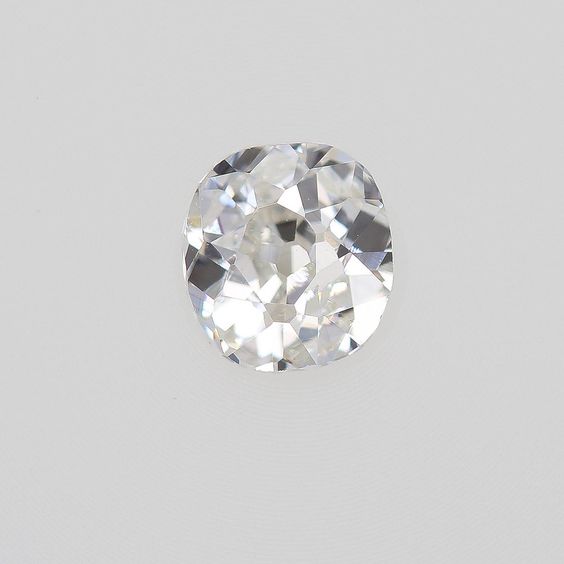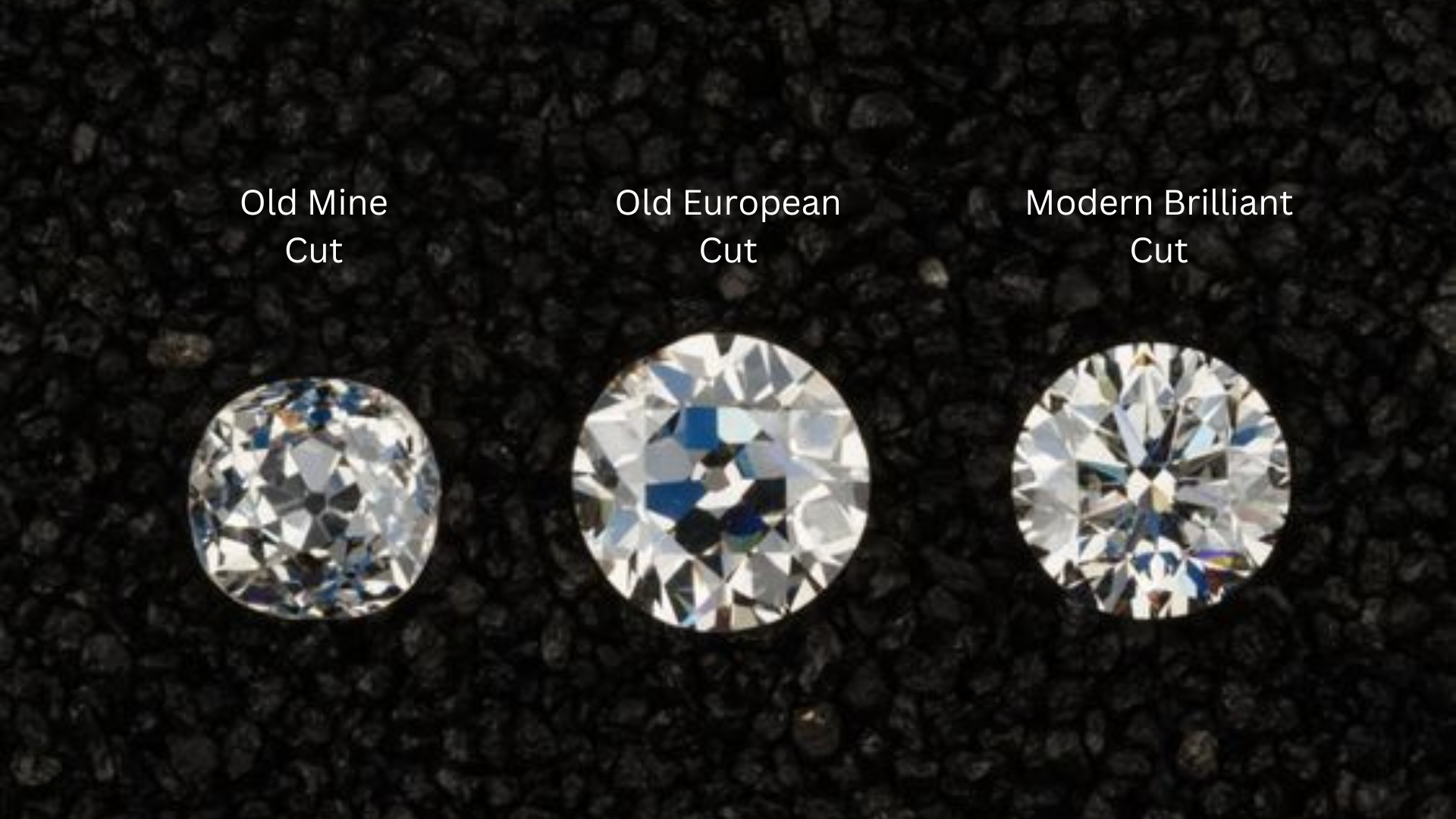Old Mine Cut Diamonds: History and Elegance
Diamonds are a timeless classic that has been cherished for centuries. However, have you ever heard of Old Mine Cut Diamonds? These diamonds are an elegant and unique piece of history that deserves to be celebrated. This blog post will delve into the mystery of Old Mine Cut Diamonds. We will define what they are and highlight their unique features.
Additionally, we will explore the origins of these diamonds, tracing their historical significance and evolution over time. If you are considering purchasing a lab-grown Old Mine Cut Diamond, we have you covered too! We will discuss the value of these diamonds, and factors that influence their prices, and even compare them to other diamond cuts. So please sit back and enjoy as we take you on a journey through the history and elegance of Old Mine Cut Diamonds.
Unveiling the Mystery of Old Mine Cut Diamonds

Originating in the early 18th century, old mine cut diamonds boast a distinct charm, characterized by a high crown, small table, and large culet. Their larger facets reflect 19th-century technology, setting them apart from modern cut diamonds. These diamonds hold historical significance and are highly valued for their unique appeal.
The way the diamond cutter shapes the large facets differently adds to part of its appeal, making it a popular choice for an engagement ring, especially when set in yellow gold bands with a vintage style setting. These diamonds are often used as a center stone in Edwardian-era-inspired jewelry pieces, captivating admirers with their charm and elegance.
Additionally, the GIA certificate further adds to their allure and value, making them a popular choice for centerstones. The old-world charm of old mine cut diamonds, combined with their larger facets and warm color, contributes to their appeal and sets them apart from modern diamonds, such as brilliant-cut diamonds.
Unique Features of Old Mine Cut Diamonds

With an antique diamond cut, old mine cut diamonds stand out for their deep pavilion, larger facets, and small table that differentiate them from modern cuts. Their unique, warm color is visible to the naked eye, adding to their elegance and allure. The softer look of old mine cut diamonds makes them distinctive, captivating, and part of their appeal, reflecting the craftsmanship and technology of a different era.
Tracing Back to the Origins of Old Mine Cut Diamonds

Tracing back to the early 1700s, old mine cut diamonds hold historical significance, marking the end of the 19th century with the transitional cut. This unique journey continued as these diamonds evolved into the old European cut and modern brilliant diamonds, contributing to the early developments in diamond cutting.
The historical path of old mine cut diamonds traces the evolution of diamond cuts, showcasing their integral role in the advancement of diamond cutting techniques without repeating any information or re-introducing the topic or context.
The Historical Significance of Old Mine Cut Diamonds
Rooted in the 18th and 19th centuries, old mine cut diamonds played a pivotal role in the history of diamond cutting. As modern cushion cut diamonds emerged in the 19th century, they gradually supplanted the old mine cut, marking a significant shift in diamond-cutting history. These diamonds were instrumental in the early stages of diamond cutting, laying the groundwork for modern technological advancements. The historical significance of old mine cut diamonds is deeply embedded in their distinctive charm and allure, representing a crucial juncture in the evolution of diamond-cutting techniques and styles.
Evolution of Old Mine Cut Diamonds
From transitioning out of the old European cut and antique diamond cut, old mine cut diamonds paved the way for modern cushion cut diamonds, marking a pivotal shift in diamond cutting standards. The early 18th century heralded the emergence of old mine cut diamonds, playing a significant role in shaping the diamond industry.
This evolution not only contributed to the historical journey of diamond cutting but also set the stage for modern advancements. The large facets and unique charm of old mine cut diamonds continue to be part of their appeal, offering a different way to appreciate the beauty of diamonds.
Comparisons: Old Mine Cut Diamonds Versus Others

Old mine cut diamonds stand out from their modern counterparts due to their unique cut and appeal, showcasing a distinct charm that sets them apart. The antique diamond cut of old mine diamonds exudes an allure that differs from the modern cuts, emanating a warm, unique color. When compared to modern diamond cuts, the large culet and larger facets of old mine-cut diamonds highlight their different way of catching and reflecting light, adding to their appeal and desirability. This comparison effectively captures the timeless elegance and historical significance of old mine cut diamonds in the world of fine jewelry.
Old Mine Cut vs Old European Cut
Old mine cuts, popular in the 18th and 19th centuries, feature larger facets, a smaller table, and a high crown. On the other hand, old European cuts, originating in the early 18th century, have smaller facets, a larger table, and a lower crown. Additionally, old mine cuts have a squarish shape, whereas old European cuts are rounder. The distinctive features of these antique diamond cuts contribute to their appeal and set them apart from modern cut diamonds, adding to their historical significance.
Old Mine Cut vs Modern Round Brilliant Cut
Modern brilliant cuts, with their larger facets, optimize a diamond’s brilliance, maximizing fire and sparkle. In contrast, old mine cuts feature smaller tables and larger culets, giving them a distinctly softer look compared to modern cuts. This difference in design is part of the evolution of diamond cuts over time, each with its unique appeal. The old mine cut’s softer appearance has been a large part of its appeal, capturing the essence of the historical Victorian and Edwardian eras.
Understanding the Value of Old Mine Cut Diamonds
Factors such as the diamond’s carat weight and its GIA certificate can significantly influence the pricing of old mine cut diamonds. Their unique appeal adds to their value, making them a preferred choice for an engagement ring. With lab-grown diamond options available, these diamonds offer a more affordable alternative to natural ones with a range of fancy color diamonds, appealing to those seeking an old-world charm. The quality of the cut and the diamond’s historical significance also play a crucial role in determining the value of old mine cut diamonds, making them an attractive option for those who appreciate history and elegance in a center stone.
Factors Influencing Old Mine Cut Diamond Prices
The market value of old mine cut diamonds is heavily influenced by their rarity, making them highly sought after. Their historical and antique appeal adds to their allure and prestige, especially natural old mine cut diamonds. Lab-grown old mine cut diamonds offer a compelling alternative for those seeking a more budget-friendly option. When pricing old mine cut diamonds, factors such as the quality of the cut and the diamond’s GIA certificate play a crucial role. Additionally, the color grade, with options ranging from colorless to warm color, impacts the pricing, providing buyers with different choices to fit their preferences and budgets.
Lab-grown vs. natural Old Mine Cut Diamonds
Lab-grown old mine cut diamonds offer a more budget-friendly option while maintaining their beauty, thanks to modern technology. On the other hand, natural old mine cut diamonds hold historical significance, making them more valuable. Both varieties boast a unique, antique appeal and are available in various settings, including rose gold, yellow gold, and white gold. The choice between lab-grown and natural old mine cut diamonds ultimately depends on individual preferences and budgets, with both types having their part of appeal and charm.
Key Considerations for Purchasing Old Mine Cut Diamonds
When purchasing old mine cut diamonds, it’s essential to consider the warm color that adds to their appeal. The quality of the cut is a crucial factor, and understanding the differences between old mine cuts and modern diamonds is equally important. Evaluating the cut’s quality can be done through the diamond’s GIA certificate, ensuring authenticity.
Old mine cuts offer a unique, antique appeal, distinct from modern standards, making them ideal for those seeking a different way to express their style and preferences. Assessing these key considerations will help in making an informed decision when investing in an old mine cut diamond.
Conclusion
To own a piece of history and elegance, consider investing in an old mine cut diamond. These diamonds have a unique charm that sets them apart from other cuts. With their vintage appeal and romantic allure, old mine cut diamonds hold a special place in the world of jewelry.
Whether you’re a collector, an antique lover, or simply someone who appreciates the beauty of these diamonds, owning an old mine cut diamond is a truly extraordinary experience. So, indulge in the timeless elegance of these exquisite gems and embrace the history and splendor they bring to your jewelry collection.







